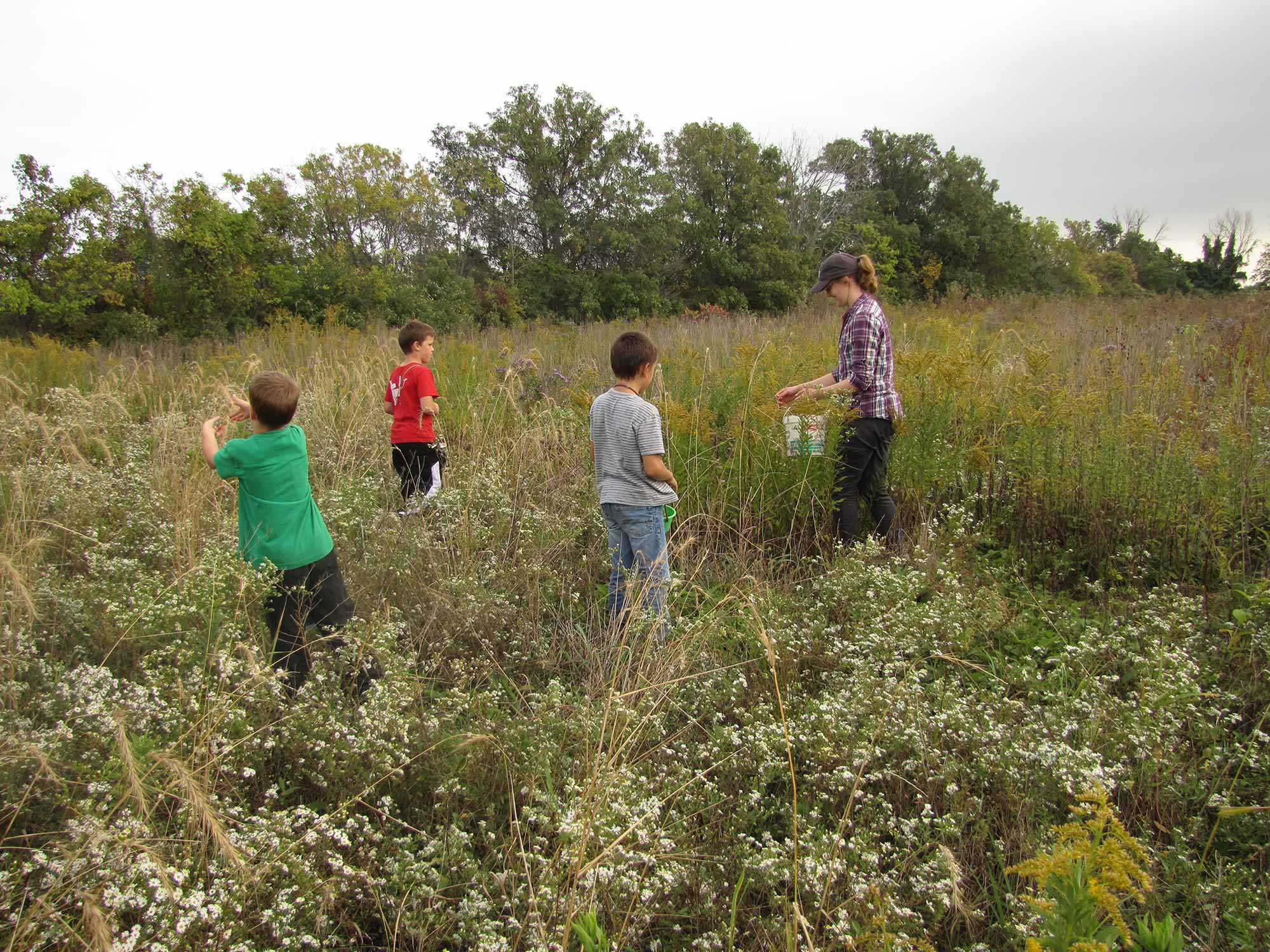

Browse by category
- Adaptive reuse
- Archaeology
- Arts and creativity
- Black heritage
- Buildings and architecture
- Communication
- Community
- Cultural landscapes
- Cultural objects
- Design
- Economics of heritage
- Environment
- Expanding the narrative
- Food
- Francophone heritage
- Indigenous heritage
- Intangible heritage
- Medical heritage
- Military heritage
- MyOntario
- Natural heritage
- Sport heritage
- Tools for conservation
- Women's heritage
From adversity to the stars
The rural Municipality of Huron East is a composite of rolling farmland and historical settlements dating back to the mid-1800s. Although agriculture, manufacturing and a vibrant service industry constitute much of Huron East’s landscape, it is the community’s natural and built heritage that continues to set it apart. As a result, the municipality has emerged as a leader in economic development as well as becoming a strong advocate for heritage matters.
Riding on the merits of past award-winning initiatives, the Vanastra Heritage Walking and Cycling Trail – the newest of Huron East’s tourism attractions – has been launched on the grounds of the former Royal Canadian Air Force (RCAF) Station Clinton, now known as the Village of Vanastra. Although the community has had its ups and downs since the base was decommissioned in 1971, it is presently experiencing something of a renaissance. To date, the heritage trail has brought positive attention to the area by attracting visitors from across the province, and is certainly proving that heritage is good for business. To heighten the experience, however, one first needs to acquaint oneself with the history of this extraordinary community.
Prompted by the need for specially trained personnel during the Second World War, the former RCAF base located in the heart of Huron County became the largest Canadian Forces centre of its type in Canada. Today, this rural community, a composite of 650 residents and multiple businesses, has been re-named the Village of Vanastra and is situated on the south-westerly border of the Municipality of Huron East.
Although the migration from a military facility to the present day rural hamlet has seen its share of challenges over the years, the base was without question a notable example of international collaboration, becoming a centre of a leadingedge scientific technology around the world.
So what was this special technology? It was Radar, and it was a game changer – not only during the war years (1939-1945), but also throughout the Cold War (1947-1991), a period or international military and political tension. This story really begins in 1941, however, when Britain sent an urgent request to Canada. Radar had undeniably proven its worth in holding off German air offensives, but the Royal Air Force (RAF)’s supply of officers, technicians and operators for stations along their coastline had been exhausted. They desperately needed trained recruits and they needed them quickly.
What happened within a few months, and thousands of kilometres from the United Kingdom, was an unprecedented exercise of co-operation and collaboration by these two allies. From April to August 1941, representatives from Britain’s RAF and the Canadian RCAF went on a mission to secure a site and build a state-of-the-art radar training school that mirrored England’s topography, but was out of sight of the enemy. After a carefully co-ordinated and guarded search, a 40-hectare (100-acre) parcel of farmland south of Clinton, Ontario in the Township of Tuckerman was purchased and the building of an entire base began. Over a 14-week period of around the clock work shifts, the base was completed and ready to welcome airmen from around the world. The RAF/RCAF Radar School received its first trainees in August of that year. RCAF Clinton’s radar school graduated over 8,000 Canadian, American and British trainees from 1941 to 1945 – of which 5,000 were Canadians, who served in all theatres of war.
Without a doubt, RCAF Station Clinton helped win the Allied victory of the Second World War and continued to train men and women for the next 26 post-war years. In the words of Fred Anderson, a member of the labour crew that built the base, “This 100 acres was the most valuable piece of real estate in the Allied world.”
When finished, RCAF Clinton could have undoubtedly been deemed the first gated community of its time, offering just about any amenity a person needed or wanted, including a post office, bank, recreation centre, library, pools, arena, dining halls, bar, hospital and places of worship, to name a few. To say the least, many locals had little knowledge of what transpired behind the base’s high, fences manned with a guard house at the gates.
Second World War veteran Jim Sands, who was stationed at the base during the early days, told me, “Once you were here, you were signed on for 50 years of saying nothing about radar.” He went on to say, “You had to keep quiet about radar, and not let it be known what it was. After all, it was very top secret.” It was this secrecy that continued to add to the intrigue of the former base, attracting the attention of the CBC’s Still Standing producers in 2016.
Still Standing, a television series starring actor/comedian Jonny Harris of Murdoch Mysteries fame, featured Vanastra in its second season. In each episode, Harris travels to small Canadian communities that are financially struggling, but “still standing.” It was Vanastra’s connection to radar and, of course, its secrecy that appealed to the show’s producers. The story and its well written script had so much allure that its writers were nominated and honoured at the Canadian Screen Awards Gala the following spring. The program not only brought Vanastra considerable notoriety, but it also dispelled many of the rumours and innuendos that had been fostered over the years.
Even though this was an air force base, no planes arrived or departed from it. In fact, there wasn’t even a runway on the property. If personnel did arrive by air, it was by helicopter, which would proceed to land on the parade grounds inside the gates.
When no solution for the abandoned facility had been found by the Department of National Defence, the county or the township, an offer to purchase the base by a real estate developer was accepted a few years after it closed. This offer excluded the elementary school bought by Conestoga College, and the green space, recreation centre and curling club, which was deeded to the municipality. Following the acquisition, the developer proceeded to sell off his assets piece by piece and then left town. Over the years, some of the buildings have lost their lustre while others have gone into decline and succumbed to demolition by neglect or have been lost to fire.
Over the years, positive attention has been brought to the area by showcasing and honouring its military heritage. Although this is not a quick fix, celebrating the area’s past through its contribution to the war effort seems to be working. With the recent development of a heritage trail throughout the original property, people are now seeing Vanastra through a new lens. There is a renewed sense of pride in the community by residents and property owners alike. Without a doubt, the trail is contributing to the community’s revitalization efforts and helping to put Vanastra on the map. The visuals of the area are improving. More industry is coming to town and property values are on the rise. Recently, Huron East hosted several successful community events here – including a Jane’s Walk and a group of Ontario heritage planners, in both cases attracting hundreds of people from across the province.
The trail takes in 10 signs installed throughout the village, conveying the history of each individual site. There is also a billboard depicting an aerial photo of the base from 1952, located at the Vanastra Recreation Centre. Tour maps are available at the recreation centre or by contacting Jan Hawley at jhawley@huroneast.com. [Photos courtesy of Jan Hawley]



























![J.E. Sampson. Archives of Ontario War Poster Collection [between 1914 and 1918]. (Archives of Ontario, C 233-2-1-0-296).](https://heritage-matters.ca/uploads/Articles/Victory-Bonds-cover-image-AO-web.jpg)





































































